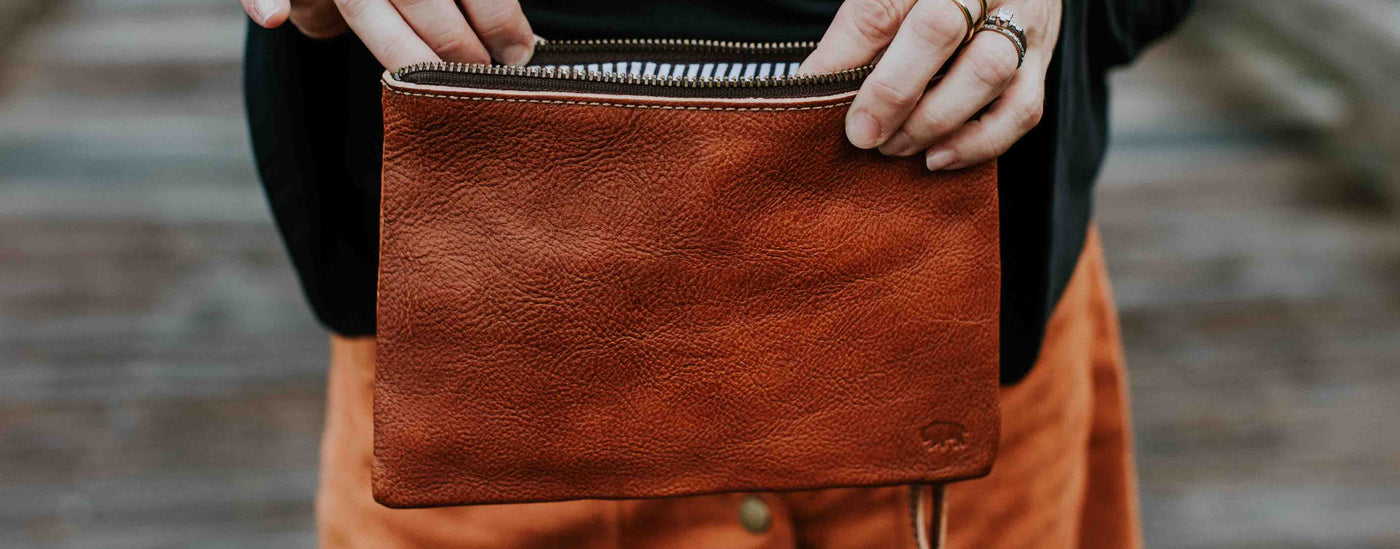Your Cart is Empty
You are $99.00 away from free shipping!
Your Cart is Empty
You are $99.00 away from free shipping!

Revised 9/29
If you’ve invested in a quality leather bag or jacket, a tear doesn’t have to mean the end of its life. (Although, it could mean the end of the life of whoever tore it.) Obviously, a leather professional ought to be your first choice to repair ripped leather in an heirloom-quality leather bag or another high-value item. But if that’s not an option, or if you’re just the DIY type, then here are 5 steps to repair small leather tears on your own.
- Sewing needle
- Seam ripper or fingernail scissors
- Thread
- Fabric scrap (similar in color to the leather, and slightly larger than the tear)
- Tape (scotch tape or painters tape)
- Fabric glue
Using the dull end of the needle, position the torn leather back into place the best you can. Apply a piece of scotch tape or painters tape over the tear to hold the leather in position. (*Press the tape onto your skin a few times to remove some of the stickiness first.)
Turn the bag or jacket inside out and locate the area of the ripped leather from the interior. If your item is lined, see if there is seam already near the tear. If so, use a seam ripper to carefully open the seam to access the underside of the tear. (If no seam, use fingernail scissors to carefully cut a hole in the lining to access the torn leather.)
Using fabric glue, affix the scrap of patch fabric to cover the tear (still working on the interior side of the leather). Your fabric will obviously need to be larger than the tear in order to adhere and properly patch the tear. Hold the patch in place for a few minutes to allow the glue to set before proceeding.
Turn to the exterior side of the leather. Carefully remove the tape. Using the dull end of the needle, gently open the edges of the tear and spread a drop of fabric glue between the fabric and the torn edges of the leather. Wipe away any excess and allow the glue to set for several hours before proceeding. We do not recommend using a hairdryer or other heat source to speed up the setting or drying process. The hot air from a hairdryer is much too harsh for leather.
Return to the interior lining of the bag or coat. Using your needle and thread, stitch the hole closed that was opened to access the underside of the leather. Don’t stress out about this part - it’s on the inside, and you’ll probably be the only one to ever know it’s there.
You may have noticed that the repair compound is not part of the ripped leather repair process. Repair compound is actually better suited for addressing scratches, not tears. But on the subject of scratches, it’s important to remember that high-quality leather bags are meant to show some age—and some of this aging includes minor marks and scratches. Your best bet for developing that well-aged look over time (and keeping your leather supple and more resistant to real damage) is to apply leather conditioner on a regular basis. Apply leather conditioner every 3 to 6 months (depending on how rough you are on your bag or coat), and keep your leather in good shape for the long haul. Follow our steps onHow to Use Leather Conditioner to ensure you’re properly caring for your leather bag or apparel.

